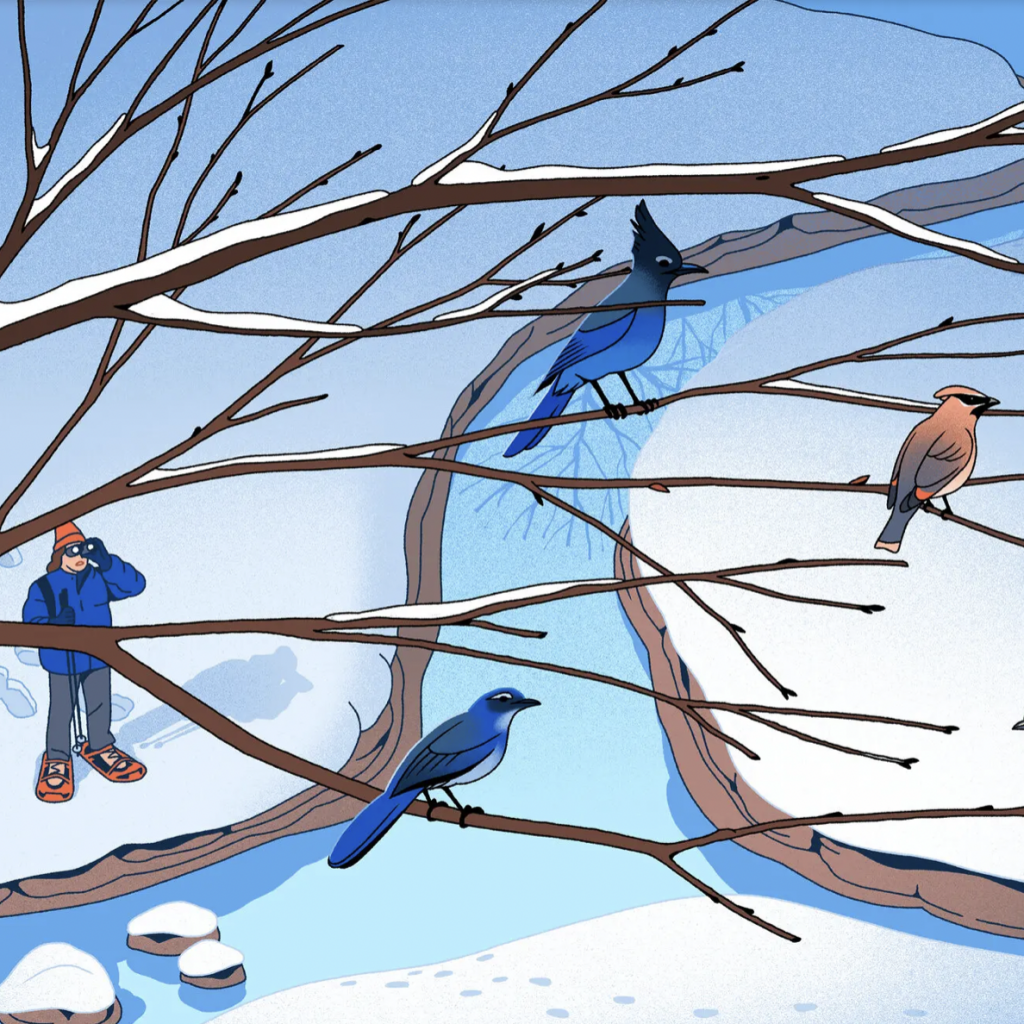
The Quiet Thrill of Winter Wildlife Viewing
In Colorado’s Rockies, birds and other animals stand out against the snow, and even if you can’t see them, their tracks let you know they’re around.
The Clark’s nutcracker, I surmised after observing one in an Aspen tree last winter furiously pecking at a seed, is a determined bird. His sharp beak matched the black wingtips on his pearl gray body, and white, spectacle-like eye rings seemed to amplify his diligence. The bird is the size of a jay, but on this frigid morning in Aspen, Colo., he had puffed out his feathers for warmth in comically plump style.
“Every day’s mission for all the birds that stay here in the winter is to get the calories that they need,” said Rebecca Weiss, my birding guide and the author of “Birds of Aspen and the Roaring Fork Valley,” who leads birding excursions year-round for the conservation and education nonprofit Aspen Center for Environmental Studies.
Most people associate birds and birding with warmer weather, which the animals often chase. But many endemic species stay and, here in the Rocky Mountains, migrants arrive from the more punishing north.
In winter, wildlife watchers have the advantage of clearer sightlines after the deciduous leaves have dropped. Birds and other animals often stand out against the white backdrop, making them easier to spot. And even if you can’t see them, their tracks let you know they’re around.
The Clark’s nutcracker, I surmised after observing one in an Aspen tree last winter furiously pecking at a seed, is a determined bird. His sharp beak matched the black wingtips on his pearl gray body, and white, spectacle-like eye rings seemed to amplify his diligence. The bird is the size of a jay, but on this frigid morning in Aspen, Colo., he had puffed out his feathers for warmth in comically plump style.
“Every day’s mission for all the birds that stay here in the winter is to get the calories that they need,” said Rebecca Weiss, my birding guide and the author of “Birds of Aspen and the Roaring Fork Valley,” who leads birding excursions year-round for the conservation and education nonprofit Aspen Center for Environmental Studies.
Most people associate birds and birding with warmer weather, which the animals often chase. But many endemic species stay and, here in the Rocky Mountains, migrants arrive from the more punishing north.
In winter, wildlife watchers have the advantage of clearer sightlines after the deciduous leaves have dropped. Birds and other animals often stand out against the white backdrop, making them easier to spot. And even if you can’t see them, their tracks let you know they’re around.
Read the full New York Times article HERE




